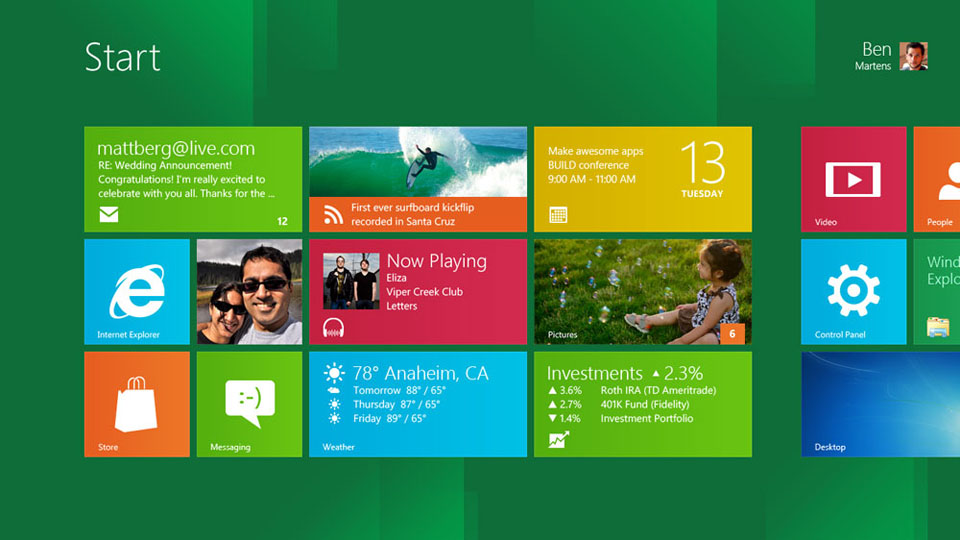Windows 8 and why the Zune brand needs to die
Over the years, Microsoft has taken a lot of flak for their horrible naming conventions and overly long names, and deservedly so. When first announced, Windows Phone was going to be called Windows Phone Series 7, so a user of such would be using a Windows Phone 7 Series device. They officially chopped of the “Series” by launch, and now just advertise it as Windows Phone. It just makes more sense.
Similarly, they last year rebranded their paid Office cloud service to Office 365, which competes on price and services with Google Apps paid services. Office 365 makes sense. It’s Office, all the time. Do you know what they called it previously?
Business Productivity Online Suite.
That’s right. It was known as BPOS. It is probably one of the worst names you could come up for any product anywhere, outside of shit sandwich. It’s doesn’t matter how well it works; when you say BPOS, there’s no way that “Business Productivity Online Suite “ is the first thing that comes to mind.
With the Metro UI sporting Windows 8 Consumer Preview about a week away, Tom Warren over at The Verge has come out with some additional information on how Microsoft is planning to unify its brands moving forward. First and foremost is the unification of services. In the past, Microsoft’s branding was all over the place, from Xbox, to Zune, to Windows Live, it was a horrible tangle. Rafael Rivera over at Within Windows has more screenshots (one which I’m using for this article) of what the interface looks like for the Microsoft account.
While it has been a hodge podge of naming conventions, that doesn’t mean things didn’t work together. A lot of consumers just weren’t aware of the disparate services. Take a look at Hotmail. It’s still the number one web mail service in the world, used by 100’s of millions of people. Many of them will log into Hotmail.com and not think about it again, even though by the mere fact of having a Hotmail account, you also have access to Microsoft’s SkyDrive cloud storage solution, their free Office Web Apps and the Zune media portal. Cribbing from the aforementioned Tom Warren, here’s the lineup change for Microsoft moving forward.
- Microsoft Account (formerly Windows Live ID)
- Mail (formerly Windows Live Mail)
- Calendar (formerly Windows Live Calendar)
- People (formerly Windows Live Contacts)
- Photos (formerly Windows Live Photo Gallery)
- Music (formerly Zune Music Player)
- Video (formerly Zune Video Player)
Zune is a prime example of a somewhat successful service that nonetheless failed with consumers. The Zune HD as a media player received nothing but stellar reviews when it was released, and to tie into that hardware was the Zune service, which provided much of the same media consumption options of iTunes, as well as a subscription based Zune Pass music service. One of the problems that hurt widespread Zune adoption is that the hardware was US centric, though it did launch in the UK as well. This alone made it a niche player.
Speaking of a niche player, the Zune software on the PC represents a 3rd way Microsoft users could play music and video, after Windows Media Player and Windows Media Center. Unfortunately, Zune never supported the 3rd party codecs that Windows Media Player and Media Center did, making it at most a “sometimes use” interface. While operating with a more forward thinking user experience, and a precursor to Metro, the only functionality it added was the media purchasing/rental, and the sync tool for Windows Phone. With the introduction of the Windows Marketplace in Windows 8, the media purchasing/rental aspects aren’t needed. The major functionality of the Zune software will live on, but directly integrated into the OS itself.
This lies in stark contrast to the Xbox, which will become the gaming/media touchstone for most Windows 8 users. While not on the above list, the Xbox has managed to resonate with consumers and not just gamers. Just over a year ago, Microsoft released numbers for Xbox usage, and while the average daily usage went up, on average 40% of the console time is now for watching videos or listening to music. The goal of turning the Xbox into more than a gaming console was working, whether it’s through 3rd party services like Netflix or rentals through the Zune service. One of the ironic things about killing the Zune brand though, is that for now it’s the Zune software that allows Xbox users to rent and purchase music and videos.
It’s interesting that between 2009 and 2010 the Zune more than doubled its video market share to 18% in the US, though most casual users would probably identify more with “renting a video on Xbox” than “renting a video from Zune on the Xbox”. In short, while the Zune service works, it’s the Xbox brand that most consumers think of when it comes to digital entertainment from Redmond.
This unification under a single interface will also help raise awareness of the other services Microsoft makes available to users. Besides increasing the functionality of SkyDrive, for example, it will also be integrated into the new OS, as will a light version of their Office suite. The latter, while having roughly the same number of users as Google Docs, doesn’t have the mindshare. While I think Office Web Apps is better than Google Docs, especially with it automatically attached to my SkyDrive account, if most Windows users aren’t even aware of its existence, then it’s just not going to get that mindshare. The unification of everything under a singular Microsoft Account, along with the new Metro UI that makes features more prominent, can go a long way in changing that.
This is probably true with the social aspects of the OS as well. On the phone, they’ve already provided OS level integration with Twitter, Facebook, LinkedIn and their own Live Messenger services, and it’s a seamless integration. There’s no reason to think that this same integration won’t happen in the Windows 8 People application, along with the addition of Skype, which is an interesting case on its own.
Skype, as a recent and costly acquisition, is in a unique place It’s presumed that Microsoft will link Skype directly into the People hub, while still providing standalone Skype applications for users on other desktop and mobile operating systems. While Skype was an expensive purchase at 8 billion, in its last fiscal year, the VoIP service pulled in $800 million in revenue.
In short, even with branding unification, there’s no way that Microsoft is going to knife the Skype baby.
Zune, however, is one baby they can offer up in sacrifice, and quite readily, but that’s okay. The Zune DNA is already an integral part of Microsoft’s future. One needs to look no further than the UI of Windows 8, Windows Phone and the Xbox to see that.







Why users still use to read news papers when in this technological
globe the whole thing is available on web?
Helpful info. Lucky me I discovered your web site unintentionally, and I am stunned why this accident did not came about earlier!
I bookmarked it.
Hi, the whole thing is going sound here and ofcourse every
one is sharing facts, that’s truly good, keep up writing.
Right now it appears like BlogEngine is the top blogging platform available right
now. (from what I’ve read) Is that what you’re using
on your blog?
Wonderful post but I was wanting to know if you could write a litte more on this topic?
I’d be very thankful if you could elaborate a little bit further.
Bless you!
This design is steller! You certainly know how to keep a reader entertained.
Between your wit and your videos, I was almost moved to start
my own blog (well, almost…HaHa!) Excellent job.
I really enjoyed what you had to say, and more than that, how you
presented it. Too cool!